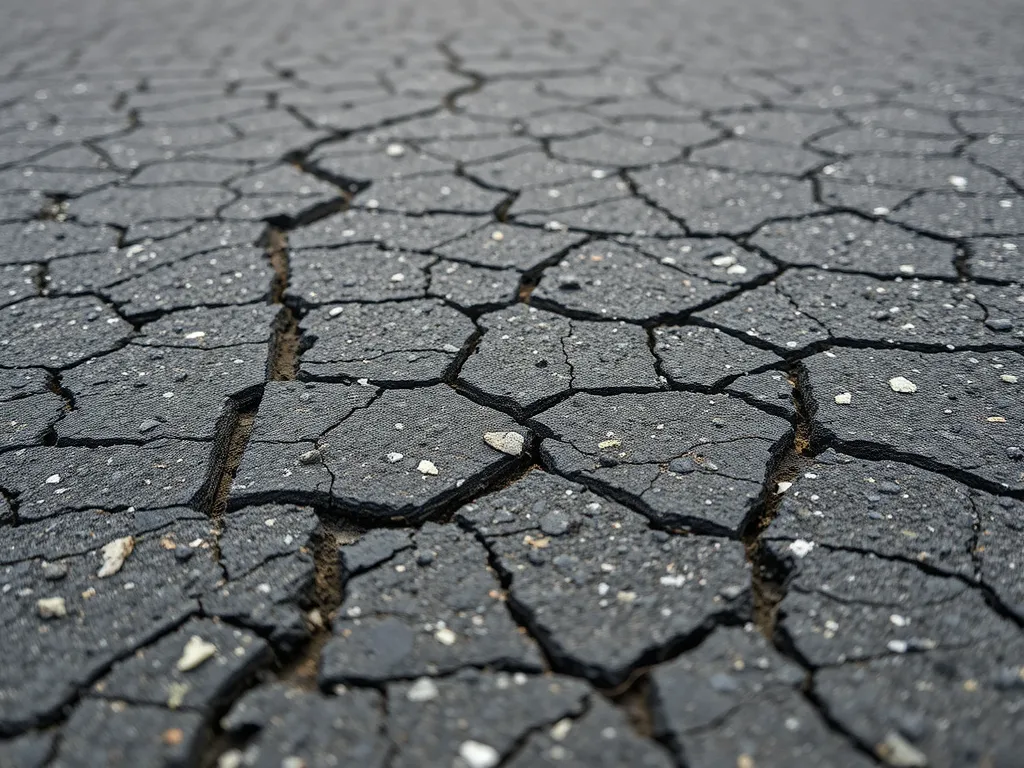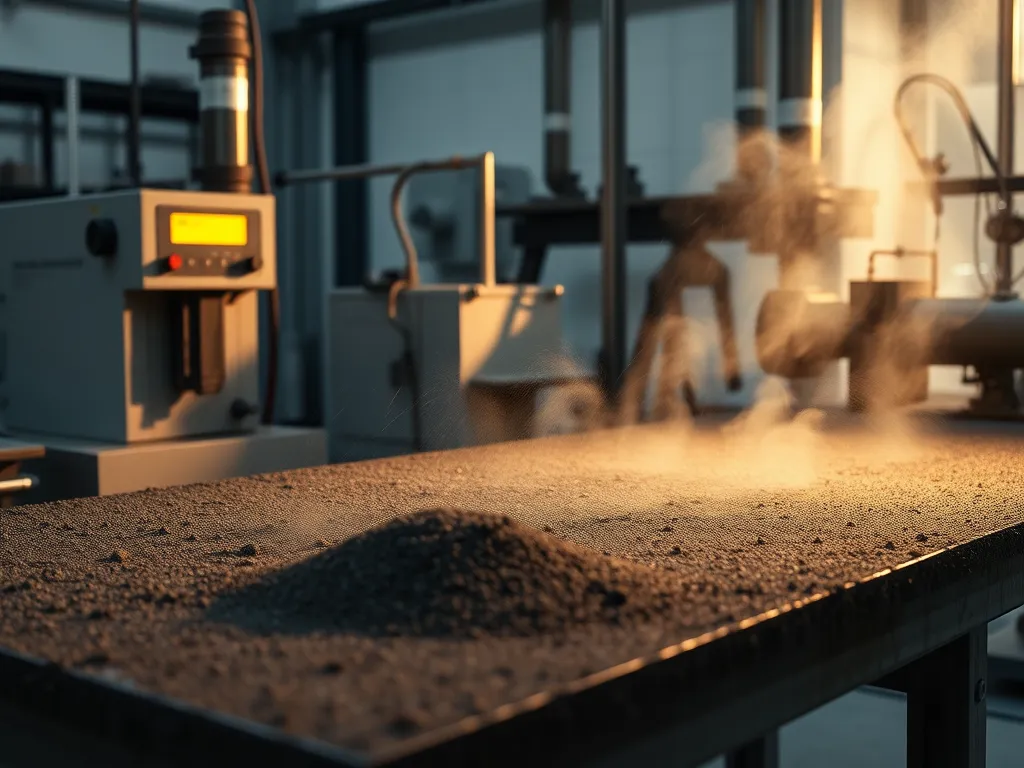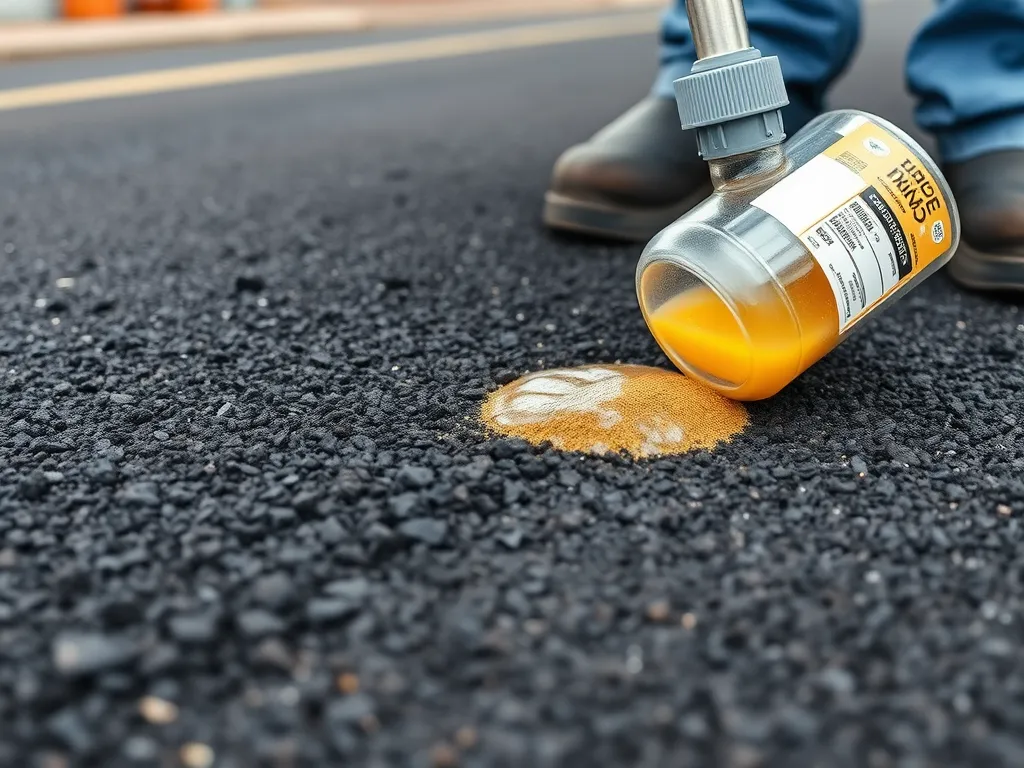What Determines How Long Your Asphalt Lasts?
Published on: June 6, 2025 | Last Updated: April 14, 2025
Written By: George Voss
Asphalt aging refers to the gradual breakdown of pavement due to oxidation, loss of oils, and environmental stress. Durability depends on material quality (like aggregates and PG-grade binders), installation temperatures, and exposure to UV rays, water, or heavy loads. Properly mixed asphalt with polymer-modified binders can last 15-25 years, while poorly designed pavements may crack or rut in 5-8 years.
This article explains how asphalt ages and what keeps it intact. We’ll break down the science behind oxidation (exposure to oxygen) and volatilization (evaporation of oils). You’ll learn why 95% aggregates and 5% bitumen isn’t enough without proper compaction or drainage. We cover temperature extremes (-40°F to 120°F impacts), testing methods like the Pressure Aging Vessel, and cost-effective maintenance tips. Data-driven solutions included.
Contents
Understanding Asphalt Aging
Asphalt degrades over time through chemical changes and environmental stress. This process weakens pavement structure, causing cracks, raveling, and reduced load-bearing capacity. Recognizing these mechanisms helps develop strategies to extend road service life.
What Are the Aging Properties Of Asphalt?
Aging properties define how asphalt binder changes physically and chemically under heat, air, and traffic. Two primary processes dominate: binder hardening through atmospheric reactions and loss of volatile components.
Oxidation and Chemical Hardening
When asphalt binder reacts with air, its molecules cross-link and stiffen. This chemical hardening increases brittleness by 40-60% within 5-7 years in moderate climates. UV radiation accelerates the process, creating surface cracks that allow water infiltration. Polymer-modified binders like PG 76-28 slow hardening by maintaining flexibility at low temperatures.
Volatilization of Light Oils
High temperatures (above 320°F) cause lighter hydrocarbon fractions in asphalt to evaporate. This mass loss ranges from 0.5% to 2.3% during production and placement. Volatilization leaves behind a stiffer, less elastic binder – a key reason fresh asphalt mixes arrive at 290-310°F to balance workability and durability.
Impact on Asphalt Aging Resistance
Superpave specifications address aging through short-term (plant mixing) and long-term (in-service) testing. Binders graded PG 64-22 or higher show better resistance to thermal cracking from chemical hardening. Warm-mix asphalt technologies reduce production temperatures by 50°F, cutting volatilization losses by 35% compared to traditional hot-mix.
While aging mechanisms determine material breakdown, pavement longevity also depends on structural design choices. Next, we explore how material selection and installation practices combat these degradation processes.
Key Factors Influencing Asphalt Durability
Durability depends on material choices, construction precision, and environmental adaptation. Each element works together to slow asphalt aging effects and extend pavement service life.
What Factor is Most Important for Pavement Durability?
No single factor guarantees longevity. Material quality, construction methods, and temperature control form a three-legged stool supporting asphalt performance aging resistance.
Material Quality: Aggregates and Binders
High-grade crushed stone (95% fractured faces) creates stable skeletons within asphalt mixtures. PG (Performance-Graded) binders rated for local climates—like PG 64-22 for colder zones—resist thermal cracking. Polymer-modified binders with 3-5% SBS elastomers boost flexibility, reducing raveling by 40%.
Construction Quality of Asphalt Mixtures
Proper compaction at 92-96% density locks aggregates in place. Superpave mix designs ensure optimal stone-on-stone contact, while segregation during placement creates weak zones prone to aging asphalt pavement cracks.
Temperature Balancing During Installation
Mat temperature below 290°F during rolling causes poor bonding. Above 320°F, binders oxidize faster. Infrared scanners track thermal consistency, preventing short-term aging from heat loss or overheating.
What is the Durability Of Asphalt?
Durability measures how well pavements resist cracking, rutting, and weathering over time. Metrics like fatigue life (10,000+ load cycles) and tensile strength (150-300 psi) quantify asphalt cement durability.
Definition and Performance Metrics
ASTM D7460 tests measure cracking resistance at -20°F. The Hamburg Wheel Track Test evaluates rut depth after 20,000 passes. Pavements lasting 15-25 years typically score above 85% on these asphalt durability tests.
Role of Polymer-Modified Binders
Adding 4% crumb rubber or plastomers creates anti-aging asphalt that withstands UV rays and fuel spills. Modified mixes show 60% less age-related cracking versus conventional blends after 10 years.
While material and construction choices set the foundation, environmental exposure determines how quickly pavements degrade. Next, we’ll examine how temperature swings and moisture attack even robust asphalt surfaces.

Lifespan Of Asphalt Pavements
What is the Lifespan Of Asphalt?
Asphalt pavements typically last 15-30 years. This range depends on traffic loads, maintenance frequency, and climate conditions. High-traffic interstate highways may require resurfacing every 10-15 years, while residential driveways often exceed 20 years with proper care.
Typical Longevity Ranges
Standard asphalt mixes last 15-20 years before major rehabilitation. Polymer-modified asphalt with PG (Performance-Graded) binders can extend service life to 25-30 years. Sealcoating every 3-5 years adds 5-8 years to the lifespan by blocking UV damage and water penetration. A 2022 NAPA study found pavements with routine maintenance last 73% longer than unmaintained surfaces.
How Environmental Exposure Reduces Lifespan
UV radiation triggers asphalt aging effects through oxidation, hardening surface layers by 2-4 mm annually. Thermal stress from temperature swings (-20°F to 120°F) causes 40% more cracking than controlled climates. Freeze-thaw cycles in northern states accelerate raveling and pothole formation – each cycle reduces asphalt aging resistance by 1.2% according to MnROAD research.
Moisture infiltration through unsealed cracks degrades binder-aggregate bonds, weakening pavement structure. In coastal areas, salt spray decreases asphalt cement durability by 18-22% compared to inland regions. Prolonged heat above 90°F accelerates rutting in unmodified mixes, with deformation rates increasing 0.3″ per decade.
These environmental impacts make standardized asphalt durability tests critical for predicting real-world performance. Next, we’ll examine laboratory methods to simulate and measure pavement degradation.
Also See: 5 Surprising Benefits Of Porous Asphalt
Testing Asphalt Aging and Durability
Accurate testing predicts how asphalt performs under stress. Labs simulate years of wear in days, identifying weak spots before pavements crack or rut. Three standardized tests dominate the industry.
Asphalt Durability Test Methods
Engineers rely on accelerated aging tests to measure asphalt aging resistance. These methods replicate oxidation, temperature swings, and traffic loads. Results guide binder selection and mix designs.
Thin Film Oven Test (TFOT)
TFOT bakes asphalt binder samples at 325°F for 5 hours. The process mimics short-term aging during production. Technicians track weight loss from evaporated oils and measure viscosity changes. Binders losing over 1.2% mass often fail field durability tests.
Pressure Aging Vessel (PAV) Test
PAV testing accelerates long-term aging. Samples endure 14 days at 185°F under 2.1 MPa pressure – simulating 5-10 years of oxidation. This test flags binders prone to thermal cracking. Polymer-modified blends like PG 76-22 often outlast conventional grades by 30% in PAV cycles.
Rolling Thin Film Oven Test (RTFOT)
RTFOT combines heat and mechanical stress. Asphalt films rotate at 30 rpm while baked at 325°F. The 85-minute test predicts aging during mixing and laydown. Residue penetration values below 50 dmm signal high risk of pavement brittleness.
Test results directly inform decisions on anti-aging asphalt additives and construction quality control. With data from TFOT, PAV, and RTFOT, engineers optimize asphalt cement durability against local climate threats.
Next, we examine how temperature extremes and moisture amplify these aging effects.

Environmental Impact on Asphalt Aging
Weather patterns and climate conditions directly accelerate asphalt aging effects. Extreme temperatures, water exposure, and freeze-thaw cycles degrade pavements faster than material flaws alone. Proactive design addresses these asphalt durability factors.
Temperature Extremes and Cycles
Asphalt surfaces endure temperature swings from -30°F to 140°F in continental climates. Thermal expansion/contraction creates stress fractures over time. Repeated heating hardens binders through oxidation, while rapid cooling triggers thermal cracking. Arizona DOT studies show pavements in Phoenix (avg. 107°F summer highs) require resurfacing 3-5 years sooner than those in Flagstaff (82°F).
Mitigation strategies include:
- Using PG 76-22 binders in hot climates vs. PG 64-28 in cold regions
- Adding crumb rubber (8-12% by weight) to improve flexibility
- Installing expansion joints every 20-30 feet in thick pavements
Moisture Infiltration and Frost Effects
Water penetration causes 60% of premature asphalt aging in northern states. Porous mixes (200-300 millidarcies permeability) allow water to seep into base layers. Frost heave lifts pavements up to 4 inches, while spring thaws create voids that collapse under traffic loads.
Key durability solutions:
- 4-6% lime additive in mixes reduces moisture damage by 40%
- 2% minimum slope for drainage prevents ponding
- Geotextile underlayments block capillary rise from subgrades
These environmental asphalt aging factors demand tailored responses. Next, we examine how lab tests predict pavement performance under simulated weather assaults.
Frequently Asked Questions (FAQ)
How Does Oxidation Affect Asphalt Aging?
Oxidation is a key factor in asphalt aging as it leads to chemical hardening of the binder, making it more brittle over time. This hardening can increase the likelihood of cracks, especially in areas exposed to UV radiation. The process typically accelerates under high temperatures and can significantly reduce the pavement’s flexibility, impacting its overall performance.
Can Anti-aging Additives Extend Pavement Life?
Yes, anti-aging additives can help extend the life of asphalt pavements. These enhancements, such as polymer-modified binders and rejuvenators, work by increasing the flexibility of the asphalt and improving its resistance to environmental stressors like UV rays and moisture. By modifying the chemical structure of the binder, these additives can reduce the rate of oxidation, leading to longer-lasting pavements.

Closing Thoughts
Asphalt aging and durability are critical factors for ensuring the longevity and performance of pavements. Understanding the aging properties and the impact of various environmental factors helps in making informed decisions during installation and maintenance.
Key elements such as material quality, construction practices, and environmental conditions significantly influence asphalt durability. Testing methods like the Thin Film Oven Test and Pressure Aging Vessel Test provide valuable insights into the performance of asphalt over time, enabling more effective management strategies.
By adopting best practices and utilizing advanced materials, you can maximize the lifespan of your asphalt surfaces. For more resources and tools to assist with your asphalt projects, check out Asphalt Calculator USA.
Additional Resources for You:
- American Association of State Highway and Transportation Officials (AASHTO). (2008). Mechanistic-Empirical Pavement Design Guide (MEPDG). Washington, DC: AASHTO.
- Asphalt Durability – Pavement Interactive
- (PDF) Influence of Aging Time on Asphalt Pavement Performance
- Comparative analysis of several short-term aging simulation methods and their impact on long-term aging performance of asphalt binders – ScienceDirect
- Investigation of the field aging behavior and gradient characteristics of asphalt pavement of cement bridge deck – ScienceDirect


